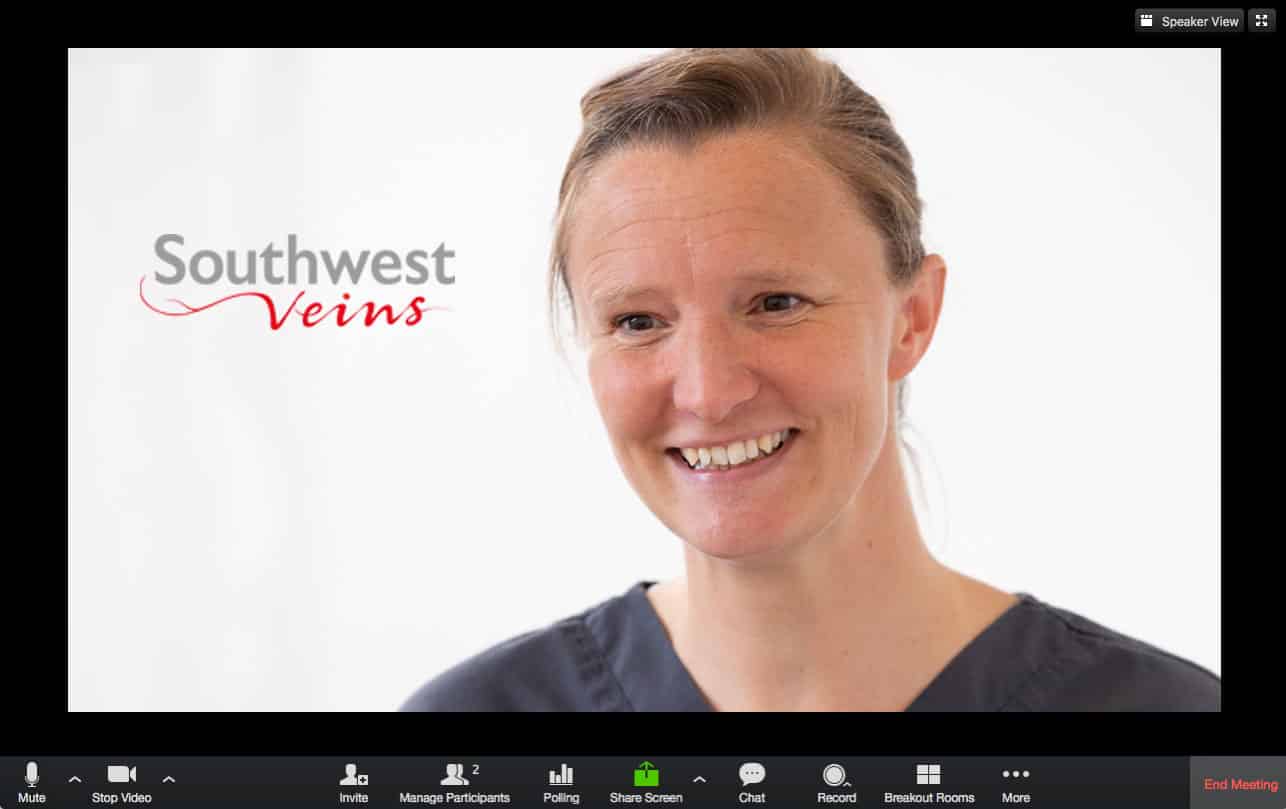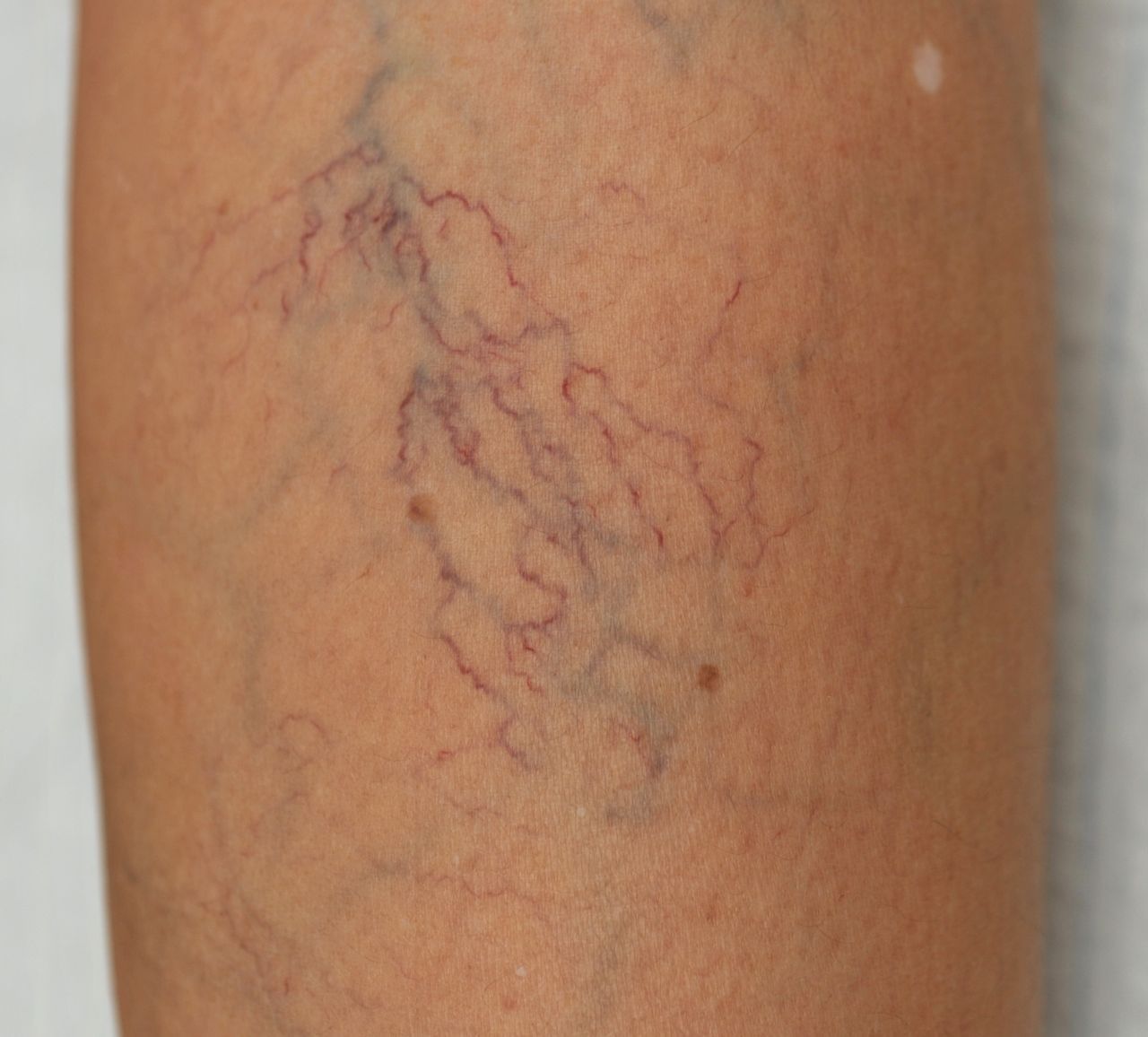Thread Veins
Thread veins (also known as spider veins, broken, or matted veins) are tiny red, blue and purple veins located in the uppermost skin layers, usually on your legs or ankles. This means that they are very visible and, for many people, unsightly. Medically they are not a problem (causing, at worst, occasional itchiness or slight bruising), but cosmetically they often are!
FAQ – What are thread veins? – video 28 seconds
They can also appear elsewhere on the body or face and, although we don’t treat these untypical presentations, we are able to recommend colleagues who do.
£300
per treatment session
Can't find the answer to your question...
Thread veins (telangiectasias) are prominent clusters of small, damaged blood vessels in the skin. Red, blue or purple, they branch out from a central locus in a spider-like configuration.
Frequently Asked Questions
What are common causes of thread veins?
Thread veins are small, superficial blood vessels that become visible on the skin’s surface. Common causes include genetics, aging, hormonal changes such as pregnancy and menopause, sun exposure, and lifestyle factors like prolonged standing, which can increase pressure in the veins of the legs. Injuries or trauma to the skin, and certain medical conditions can also lead to the development of thread veins. Additionally, factors like obesity, wearing tight clothing, and a history of blood clots can contribute. While often considered a cosmetic concern, they can sometimes be symptomatic of underlying venous insufficiency. Regular exercise and protective measures can help prevent their formation.
Watch our short video on the causes of thread veins.
How are thread veins treated?
Thread veins can be treated using various methods, depending on their size, location, and the patient’s preference. At Southwest Veins, we use a sclerosant solution that is injected into the veins, causing them to collapse and fade. Some providers may use laser therapy, electrodesiccation, or intense pulsed light (IPL) treatments, which can be effective for treating thread veins on the face.
Watch our short video on how thread veins are treated.
How many thread vein treatments will I need?
The number of treatments required to resolve thread veins varies based on the size, location, and number of veins being treated. On average, you may need around 2 to 6 sessions, spaced several weeks apart, before the thread veins fully disappear. Most patients can expect the issue to be resolved within a few weeks but, in some cases, it may take a few months.
Watch our short video on how many thread vein treatments are required.
Will thread veins come back after treatment?
There is no guarantee that thread vein treatments will prevent them from ever recurring. Factors that originally caused the thread veins, such as genetics, aging, hormonal changes, and prolonged standing, can lead to the development of new veins in the treated or adjacent areas. Some patients may notice recurrence in the same areas if the underlying cause isn’t addressed. It’s therefore essential to maintain preventive measures, such as wearing sun protection, avoiding prolonged standing, using compression stockings, and engaging in regular exercise to boost circulation.
Watch our short video on thread veins coming back after treatment.

Video appointments
Book your FREE initial consultation to discuss your thread vein removal via video. This enables us to meet, virtually, face to face and for us to diagnose your condition and answer any specific questions.

